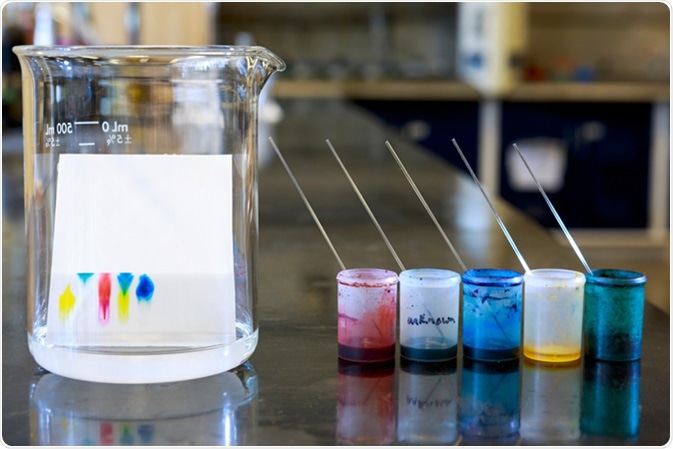Chromatography is the laboratory technique of separating the components of a mixture. The process starts by dissolving the mixture in a fluid (mobile phase) and passing it through another material being held in place by a fixed structure (stationary phase).
The separation of the substances is facilitated by the differences in their partition coefficients, which is the ratio of each compound in the two solvents when in equilibrium. This allows the substances to be analyzed to exhibit different polarities when interacting with the system’s solvents, making them travel at varying speeds when passing through them.
The term for these different travel speeds is retention time, and this is what makes separating the substances possible but easy. Chromatography is essential to virtually all laboratories worldwide across various sectors. There are many ways to perform the technique, and high-performance liquid chromatography or HPLC is easily the single most popular method in the industry. But before we get into the reasons behind its reputation, we must first answer the question: What is HPLC?
What is High-Performance Liquid Chromatography?
In high-performance liquid chromatography, the mobile phase uses a carrier gas stream of helium or nitrogen, while the stationary phase consists of a column packed with chromatographic material. In this method of separation, the sample is pumped through the column at increased pressure. That is why in its earlier years, the technique is known as high-pressure liquid chromatography.
HPLC is highly efficient, capable of isolating even the smallest amount of a substance as long as it can be liquified. Identifying trace quantities to the order of parts per trillion is fairly easy to do using this method. HPLC has found countless applications in science and various industries such as forensics, pharmaceutical, and chemical due to its accuracy and versatility.
How Does It Work?
The main features of an HPLC are a solvent reservoir, a pump capable of delivering high pressures, a chromatographic column, an injector mechanism, and a detector. The mobile phase takes place in the reservoir, where the solvent is stored. In most applications, at least two reservoirs capable of holding 1000 cc of solvent each are needed. These reservoirs are hooked up to a diffuser used to pass the helium gas into the system.
As the solvent is introduced into the injector system, the pump dictates how fast the mixture will flow through the column. The packing material used inside the column is chosen to effect maximum separation of the analytes. The detector then senses the bands of separated compounds and sends this information to a computing device. Finally, the mobile phase leaves the detector for collection or disposal, depending on the application.
Why Is HPLC Important?
Now that you have a basic understanding of what HPLC is, it is easier to appreciate the technique’s importance to various industries. The latest HPLC systems are automated, which allows laboratories to control the chromatography instrumentation fully. The system has provisions for easy data management and reporting. It also has built-in security features and instrument validation capabilities for reliable results.
Being both powerful and adaptable can increase a laboratory’s productivity by managing all phases of the analysis process, from introducing the sample to executing the procedure to reporting the results. Most laboratory techniques involve identifying, isolating, purifying, or quantifying a compound or substance, either quantitatively or qualitatively. HPLC happens to be applicable in all situations. With its highly adaptable and flexible process, HPLC finds uses in many applications:
Purification and analysis of water
HPLC can be used to analyze if a water source is fit for human consumption or check the effects of a manufacturing plant on nearby water sources.
Clinical diagnosis
Due to its speed and capacity to accommodate a wide range of substances, the reversed-phase HPLC is commonly used in clinical diagnosis. For instance, HPLC can be performed to analyze the precursors and metabolites of catecholamines to diagnose various medical conditions such as Parkinson’s disease, muscular dystrophy, and heart conditions.
Pharmaceutical Industry
A vital part of the pharmaceutical industry is ensuring the purity of their products. Given the industrial scale at which drugs are being manufactured, HPLC is a cost-efficient method to ensure its quality.
So if the question is, “What is HPLC?”
The answer is it’s a highly effective but very affordable technique, and it has a vast scope for its application. However, the method is only as good as the equipment. If you want to learn more about this technique, many sites offer courses on the subject.



